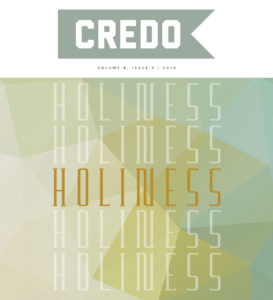“The core weakness of theological aesthetics  throughout the history of its various developments,” writes Jonathan King, “has been the primary neglect of a specifically biblical- and systematic-theological treatment” (p. 7). Addressing this weakness is exactly what King labors to do with his recent work, The Beauty of the Lord: Theology as Aesthetics. The impetus for this book comes from King’s refusal to relegate aesthetics to philosophers and artists alone; he shows that aesthetics is the appropriate province of biblical and systematic theologians. Thus, King sets out to reverse the current evangelical state of affairs, in which “a theological view of beauty plays almost no part in the work and pedagogy of systematic theology and its contribution to Christian doctrine” (p. 332). Further, The Beauty of the Lord is an interdisciplinary study of the best kind. Fairly treating philosophy, systematics, exegesis, and historical theology, the finished product is a masterpiece, one Michael Horton calls, “a feast for the soul.”
throughout the history of its various developments,” writes Jonathan King, “has been the primary neglect of a specifically biblical- and systematic-theological treatment” (p. 7). Addressing this weakness is exactly what King labors to do with his recent work, The Beauty of the Lord: Theology as Aesthetics. The impetus for this book comes from King’s refusal to relegate aesthetics to philosophers and artists alone; he shows that aesthetics is the appropriate province of biblical and systematic theologians. Thus, King sets out to reverse the current evangelical state of affairs, in which “a theological view of beauty plays almost no part in the work and pedagogy of systematic theology and its contribution to Christian doctrine” (p. 332). Further, The Beauty of the Lord is an interdisciplinary study of the best kind. Fairly treating philosophy, systematics, exegesis, and historical theology, the finished product is a masterpiece, one Michael Horton calls, “a feast for the soul.”
Synopsis
King begins this work by establishing his terms and placing them within their historical contexts. Here he introduces Anselm of Canterbury, Thomas Aquinas, Herman Bavinck, and Karl Barth as his theological-aesthetic conversation partners (as one might expect, Jonathan Edwards and Hans Urs von Balthasar join the party as well, but they arrive later on). King then labors toward a definition of God’s beauty in relation to his glory. Leaning heavily on classical theism’s conception of glory and the doctrine of Divine Simplicity, King argues that “the beauty of God manifested economically is expressed and perceivable as a quality of the glory of God inherent in his work of creation, redemption and consummation” (p. 51). In other words, King develops a radically theocentric vision of aesthetics. Beauty, as a particular manifestation of glory, is, therefore, a divine attribute. For King, the glory of God’s triune simplicity defines ultimate beauty. God manifests this beauty in—and creatures perceive and experience this beauty by—his ad extra work of creation, redemption, and consummation. Everything God does is glorious, and therefore everything he does is beautiful. God manifests this beauty in—and creatures perceive and experience this beauty by—his ad extra work of creation, redemption, and consummation. Everything God does is glorious, and therefore everything he does is beautiful. Click To Tweet
The rest of this volume explores these ad extra manifestations of God’s beauty. King begins such an exploration in chapter three by examining “Beauty’s Debut;” namely, creation (p. 88). Here, King shows the symmetrical outline of the cosmos and their place in, what King calls, the “Sublime Comedy: The Theodramatic Form of the Divine Plan” (p. 88). All of creation displays a fittingness within the story that God tells with history (i.e., the theodrama), which is a crucial vehicle for displaying his beauty ad extra.
King then moves from a consideration of creation to Jesus as the fitting incarnate redeemer of this theodrama. Chapter four considers, specifically, “the christological contours of beauty” (p. 141) in the Son’s revelation of divine glory through the incarnation. Significant in this chapter is King’s insistence that, contrary to popular belief, the Son’s incarnation “in the form of a slave” in no way concealed or hid divine glory. Rather, “Christ’s humanity in the form of a slave was most befitting for God the Son to take in accordance with his role as the Messiah” (p. 141). Given this theodrama, in other words, it is fitting for God to reveal his divine glory in the Son who “emptied himself” by taking on the form of a humiliated (and later exalted) slave.
In chapter five, King continues his tour through this theodrama by turning his attention to the beauty of the cross and ascension. Christ’s fittingness as the incarnate Redeemer is highlighted here in “the depth of beauty found in the cross” (p. 212). King unabashedly argues for the counterintuitive notion of finding retributive justice at the cross beautiful. Far from being unjust, undignified, and ugly, King argues that God’s economy of the atonement is in every way a display of his glory (which includes his beauty). The bloody cross, in other words, is beautiful.
Finally, in his sixth chapter, King concludes his exploration of divine beauty ad extra by highlighting the consummation of the theodramatic work. The emphasis here is on what the beautiful God accomplishes in the end. Central in this chapter is the concept of God “forming and making beautiful his children” (p. 253). King concludes this chapter with a rousing description of this theodrama’s telos, where “the happy-ever-after ending begins” (p. 316). “God’s new humanity in God’s new creation,” King reminds us, “will not labor under the judgment curse he pronounced in Genesis 3… the eternal affect of beholding the beauty of the Lord will be the purest response of worship—an unalloyed reflection of God’s own beautitude expressed as doxological delight” (p. 317).
Evaluation
King’s intention in The Beauty of the Lord is to handle aesthetics with a “biblical- and systematic-theological treatment,” so as to show its crucial place in dogmatics alongside other systematic loci. Mission accomplished. Not only has King fulfilled this ambitious intention in particular, this work makes a significant contribution to systematic theology in general. The success of King’s work here can be summarized under three primary headings: historical sensitivity, exegetical precision, and systematic consistency.
First, King demonstrates the kind of historical sensitivity necessary for a work like this one. King is under no delusion that his concept of aesthetics is altogether novel. Plumbing the resources of thinkers like Anselm, Barth, Balthasar, Edwards, Bavinck, and Aquinas, King demonstrates a command of the historical literature as he marries the best of yesteryear’s scholarship with today’s.
Second, King tears down the dividing wall of hostility between scholarly disciplines. Though a systematician, the exegetical and biblical-theological work he does is substantial and precise. For example, King’s primary exegetical sections (i.e., Philippians 2 [p. 15-163]; Jesus as the last Adam [p. 175-180)] and true Israel [p. 180-191]; the Transfiguration [p. 192-196]; and Isaiah 53:2 [p. 204-211]) are every bit as rigorous as one might expect from a strictly biblical or exegetical study. Rather than merely relegating such work to spokesmen of “other disciplines,” King does the hard work himself. In this way, he shows the appropriate (though often, lamentably, bifurcated) relationship between biblical studies and systematics.
Third, King’s work represents an exemplary model of systematic theology in that it showcases one of the non-negotiable principles of the enterprise: consistency. The interrelatedness of Christian doctrines is on full display in this work. If systematic theology is akin to a spider’s web, wherein every string is interconnected, such that a pluck from one side of the web reverberates throughout the whole, King highlights this fact with nuance. Plucking on the string of divine beauty, King observes the reverberation it sends to strings like divine simplicity, the Trinity, Christology, creation, the atonement and more.
Overall Contribution
Not only does King make a significant contribution to the field of systematic theology, he also brings attention to the plethora of contributions that are begging to be made in light of a properly biblical-theological and systematic-theological aesthetics. The depth of God’s infinite beauty cannot be plumbed, which means the possibilities of future work in the area are, quite literally, endless. I highly recommend this work. The Beauty of the Lord is arresting, not only because of King’s command of the content but also (and primarily) because the Lord’s beauty is arresting. King’s contribution is great precisely because he directs his reader’s attention not to his own prowess, but instead to the beauty of the Triune God. The blessed result is inescapable: doxology.


